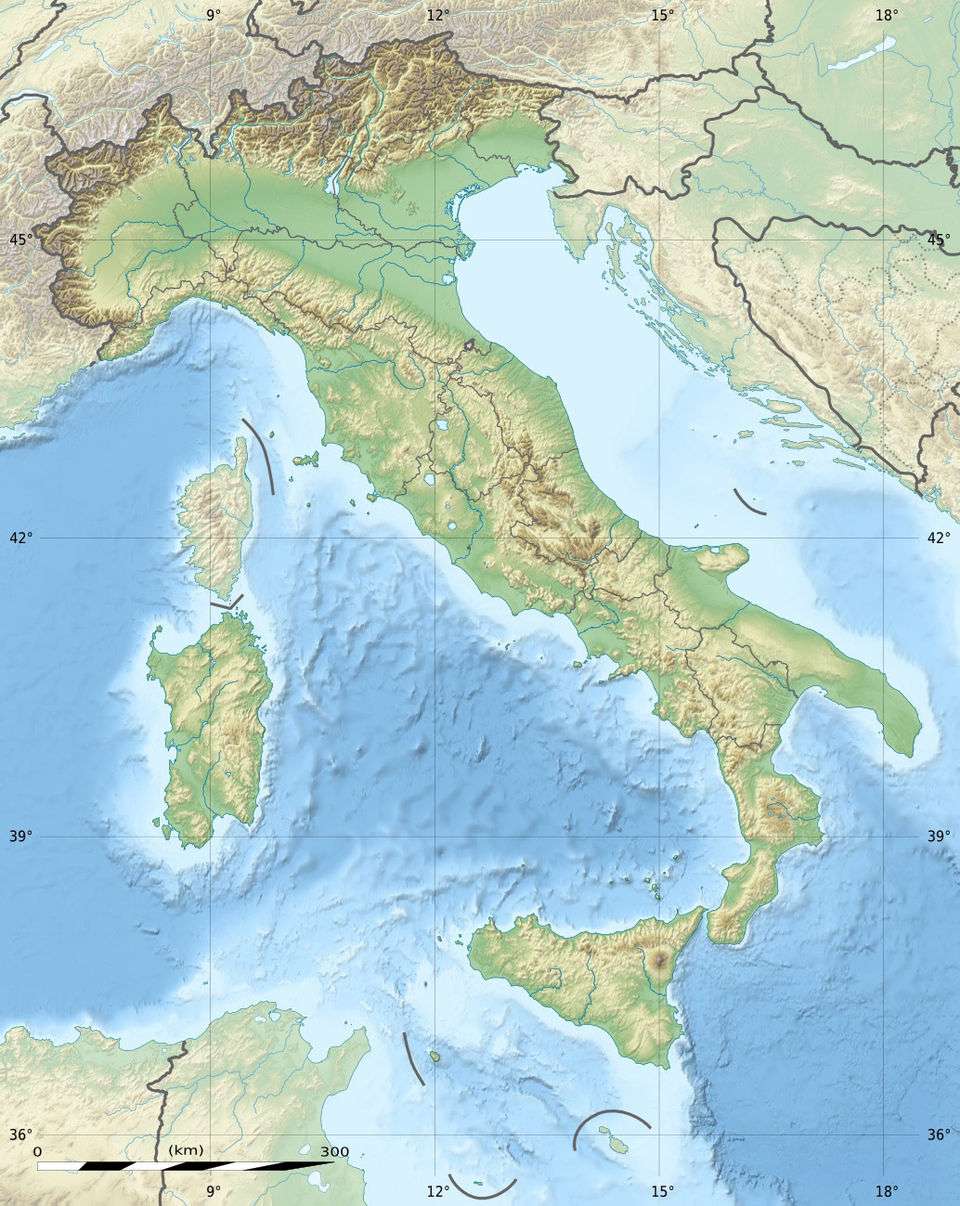2002 Molise earthquake
 | |
| Date | 31 October 2002 |
|---|---|
| Magnitude | 5.9 Mw |
| Epicenter | 41°44′N 14°53′E / 41.73°N 14.89°ECoordinates: 41°44′N 14°53′E / 41.73°N 14.89°E |
| Areas affected | Italy |
| Casualties | 28 killed |
The 2002 Molise earthquake hit the Italian regions of Molise and Apulia on 31 October at 10:32:58 (UTC). The shock had a moment magnitude of 5.9 and a depth of 10.0 km (6.2 mi). Most of the victims were killed and injured when a school collapsed in the town of San Giuliano di Puglia: 26 of the 51 schoolchildren died, together with one of their teachers. In particular, none of the nine children in the school's 4th Year (mostly born in 1996) survived.
First shock
During the night of 30–31 October there had already been three minor earthquakes, with the strongest at 3.27 (a magnitude of 3.5 on the Richter Scale, IV–V on the Mercalli intensity scale). The strongest tremor took place at 11.32 on Thursday 31 October 2002 in the area of lower Molise, which is situated in the north-east of the Province of Campobasso. It reached from the Frentani Mountains to the Fortore valley. It lasted for 60 seconds and could be felt distinctly in the centre of Molise, in the Capitanata, the Province of Chieti, and could be perceived in the Marche, Bari, Benevento, Matera, Brindisi, Rome, Naples, Potenza, Salerno, Taranto and Pescara.
San Giuliano di Puglia was near the epicentre (located between Campobasso, Larino and the Apennine Dauno). Due to the quake part of the roof of the school building "Francesco Iovine" collapsed. The school included a kindergarten, a primary school and a middle school. The roof landed on the lower part of the school. There were 57 children, 8 teachers and 2 caretakers trapped under the rubble.
Tectonics
According to the United States Geological Survey:[1]
Preliminary moment tensor solutions for this earthquake imply that the shock occurred as the result of movement on a strike-slip fault. The fault would be either a north-south, left-lateral fault or an east-west, right-lateral fault. Some geologists have hypothesized that a major component of the relative motion between the African plate and Eurasian plate is accommodated on a north-south, left-lateral, boundary that passes near the epicenter of the earthquake.
The boundary is thought to accommodate slip of 5–10 mm/ year. The preliminary focal-mechanisms are consistent with this model. It is noteworthy, however, that many destructive earthquakes in Italy occur as the result of deformation of the earth's crust that is not related in a simple way to the present-day movements of the African and Eurasian plates. Until detailed studies of this earthquake are completed, hypotheses on the earthquake's relationship to large-scale plate-tectonic processes are speculative.